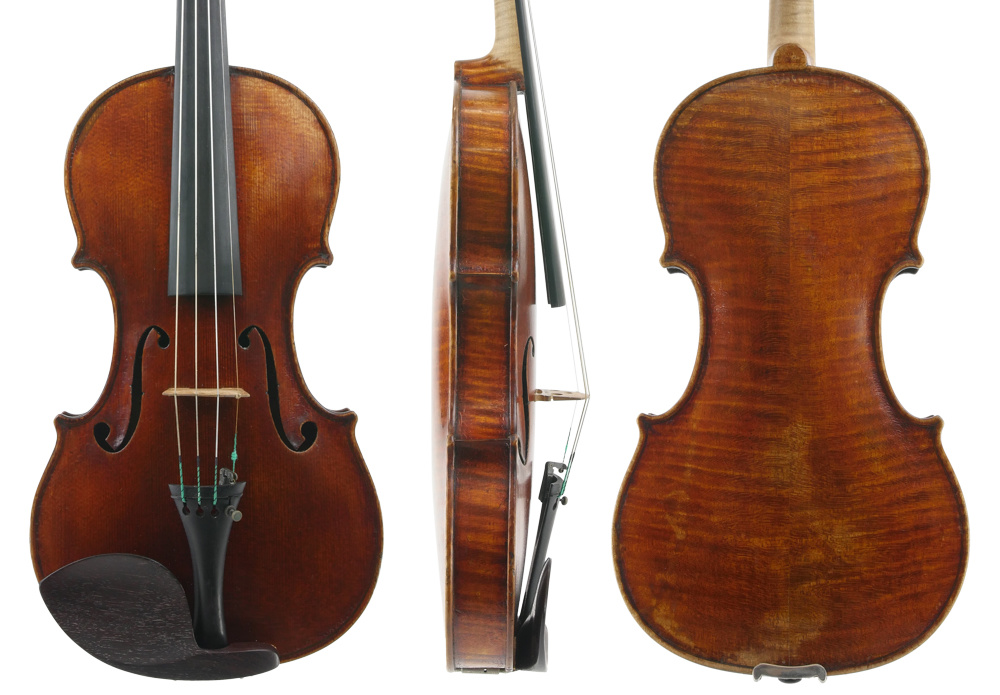Australia was first settled by Europeans in 1788. By this time the golden age of Cremona had ended and, with the vast distance of 10,000 miles lying between Italy and Australia, it would take over a hundred years before violin making became an established art form in this young country.
While a small stream of amateur makers emigrated to Australia during the 19th century, it was the English-born Arthur Edward Smith who brought the art of fine violin making to the country and who is today regarded as the greatest Australian maker of the 20th century.
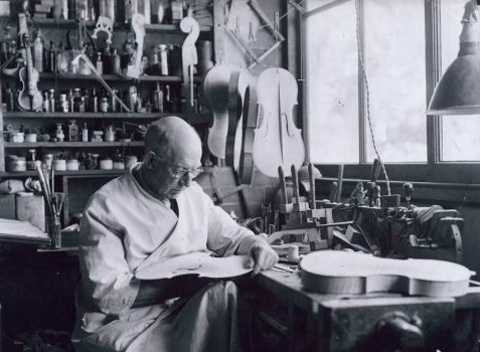
Smith in his workshop around 1954. Photo courtesy of the Australian National Library
Born in London in 1880, Smith left school aged 14 and was apprenticed to an engineering firm in Maldon, Essex. He is thought to have joined the local amateur orchestra in his teens and then took up violin making, most probably with the help of Edward Heron-Allen’s seminal book Violin Making as it was, and is, which was first published in 1884. William Henley in his Universal Dictionary of Violin and Bow Makers suggests that Smith was also influenced by the W.E. Hill book, Antonio Stradivari His Life and Work, and further states that the young Smith had made eight instruments by 1901.
In 1905 Smith began working for the instrument dealer C.W. Jeffrey’s of Maldon. He was employed by this company for four years, making approximately 20 instruments, including a quartet in 1909. The viola from this quartet reveals a talented craftsman and has a very soft varnish that is not antiqued but has aged beautifully. During the 1980s this instrument was in the collection of the violist and teacher John Curro, who subsequently sold it to a violist in the Adelaide Symphony Orchestra. The cello from the quartet was auctioned by Christie’s of London in 1996, when it sold for double its estimate.
In 1909 Smith sailed to Australia with some of his recent work and references from his former employers and even one from the local town councillor. He set up his business as a maker and restorer in Melbourne. It is unclear why he chose Australia, but perhaps he was lured by the promise of work in a flourishing young country with a growing arts community. The Melbourne Symphony Orchestra had been founded in 1906 and the other state orchestras soon followed.
After just a few years in Melbourne, Smith moved briefly to San Francisco in 1912 before returning to Australia in 1914, this time setting up in Sydney. One of his violins, a supposed Gagliano copy, is recorded by Smith as made in 1912, when he was either in the US or in Melbourne. However, like many makers, when any of his instruments returned to his shop he would often rework them and change the labels, and this violin does indeed have a later label with an earlier original date of 1912 added.
Smith recorded that he made seven violins in the year 1915 and, with the foundation of the New South Wales State Conservatorium of Music in Sydney in 1916, it would be reasonable to assume that he was the go-to violin maker and restorer of the time. By 1919 he had founded the company A.E. Smith & Co Pty Ltd, and this firm operated until 1972 along very similar lines to other major shops such as W.E. Hill & Sons.
During these 50 or so years the Smith shop became a veritable who’s who of future Australian makers, including Guy Aubrey Griffin (a future shareholder in the company), William Dolphin, Lloyd Adams, Ronald Cragg, Philip Burgess, Cedric Clarke, Thomas Lewis and Harry Vatiliotis. Towards the end of his working life he was also joined by his daughter, Kitty, and her son, Rod.
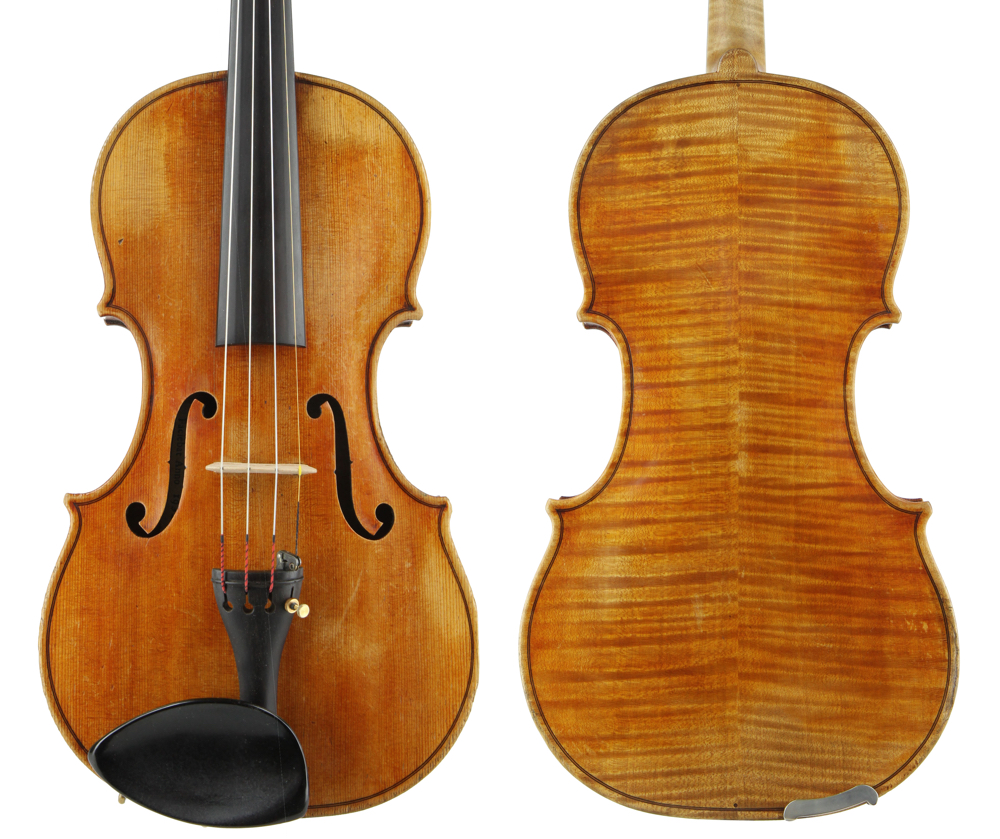
A violin from 1932. By this time Smith was running a busy violin shop and made just a handful of instruments each year. Photos courtesy Sydney String Centre
However, the instrument makers who came through the Smith shop did not have regular violin making lessons with Smith himself – in fact, some of them took years to make even one violin! Instead the shop was extremely busy with repairs, sales and even string making.
The makers who came through the Smith shop did not have regular lessons with Smith himself – in fact, some of them took years to make even one violin!
With a busy shop, Smith’s own output also suffered and he was certainly not a prolific maker. The notebooks in which he recorded most of his instruments list 180 instruments up to the year 1959. In many years only a few instruments were made and between 1940 and 1950 just 20 instruments are listed. His output of cellos was particularly small, with only two cellos made in Australia.
However, Smith’s fame spread early in his career and his instruments became sought after by eminent visiting string players, including Zlatko Balokovic (Guarneri model violin, 1931), Tossy Spivakovsky (1937 violin), Isaac Stern (Guarneri model violin, 1954) and Ruggieri Ricci (Stradivari model violin, 1957). Yehudi Menuhin owned at least two Smith violins, including a copy of his ‘Prince Khevenhüller’ Stradivari, which he described as ‘an excellent violin’ (Yehudi Menuhin and William Primrose, Violin and Viola); it appears to have been among the few violins that Menuhin’s family kept after his death, perhaps because it was a favorite. In 1958 David Oistrakh enquired about a Smith instrument and eventually purchased a 1938 violin from a Mr Stevens of Wagga Wagga! Smith is said to have exclaimed that he couldn’t produce instruments fast enough, and even at the age of 80 he had a waiting list.
Smith violins are usually based on Guarneri and Stradivari patterns, although they are not slavish copies or indeed models. One fine example from 1944, while heavily worn, shows incredible skill considering it was the first violin Smith had made after a four-year absence apparently due to ill-health. It is a blend of styles, with long-pattern Stradivari f-holes, an individual scroll and fine wood covered in a beautiful golden-orange varnish.
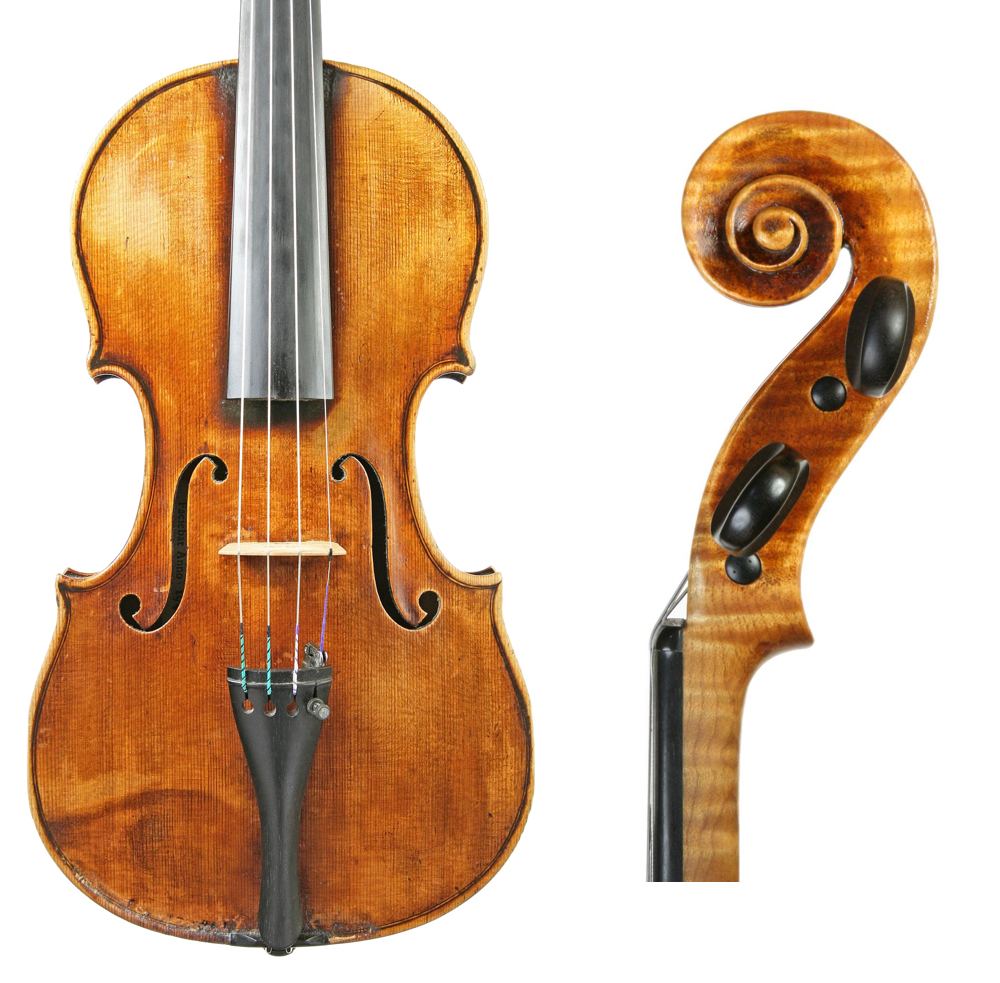
This 1944 violin shows Smith’s eclectic style, including long-pattern Stradivari f-holes and an individual scroll. Photos courtesy Alan Coggins
Perhaps being so far from the many fine instruments in Europe and the US gave Smith scope to develop his own making practices and theories. His Brescian viola model is one such example of his own ideas. Extremely popular with Australian violists, these instruments are usually large (16 1/2” to well above 17”) and loosely based on the Brescian style, but bear little resemblance to anything that Maggini or da Salo produced. He also made a ‘Macdonald’ Stradivari viola model that was similarly popular. I owned a particularly fine 1932 viola (no. 70) made on the ‘Macdonald’ model, which had workmanship equal to any of the major copyists at that time, yet was covered in a very beautiful red varnish quite unlike the original’s golden-orange hue.
The wood Smith chose was often extremely beautiful, and it is rare to see anything to match it from the makers who trained at the A.E. Smith shop – possibly because he brought his best wood with him from Europe. Some violins by Guy Aubrey Griffin (who came closest to Smith’s quality as a maker) do feature similar wood. Perhaps as one of Smith’s first students and a shareholder in the company he was allowed to choose from Smith’s stock. Varnishing was also a seemingly secretive part of Smith’s making, as his varnish is not seen on instruments by other Australian makers during this time.
During the 1950s Smith’s health declined and in 1961 he suffered a major stroke, which paralysed his right side. Although he regained some use of his right arm, instruments made after 1961 are referred to as ‘post stroke’. However, despite the undeniably rough workmanship, these instruments are still in demand thanks to the quality of the wood and their surprisingly good tone qualities.
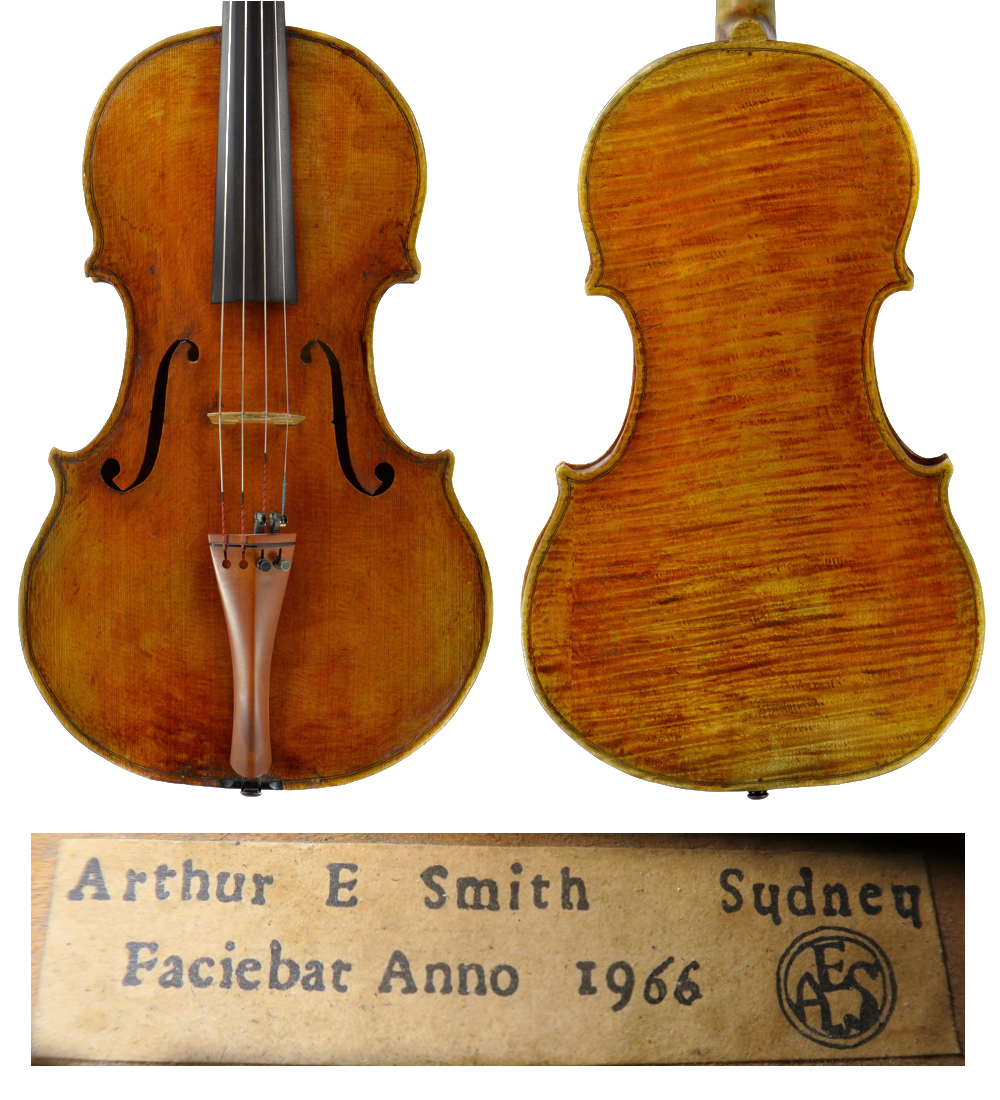
Smith ‘post stroke’ viola made in 1966. Despite its shaky workmanship, the instrument features fine wood and varnish, and has a superb tone
A viola made in 1966 fits this description, with wood of an extremely high quality and fine varnish of a perfect hue. Smith was then aged 86 and his workmanship is faltering in many places, yet the complete instrument is greater than the sum of its parts and it is one of the finest-sounding violas I have ever played.
In 1971 Smith was awarded an MBE (Member of the Order of the British Empire) for his services to music. Other accolades included a Diploma of Honour at the 1949 International Exhibition of Violin Makers held in The Hague. Smith was also the first violin maker in Australia to be elected to the International Society of Violin and Bow Makers. He died in Canberra in May 1978, aged 98.
Thanks to Alan Coggins, author of ‘Violin and Bow Makers of Australia’, and Libby Glanville of the Sydney String Centre.
Sean Bishop is Director of Bishop Instruments and Bows Ltd, London.
